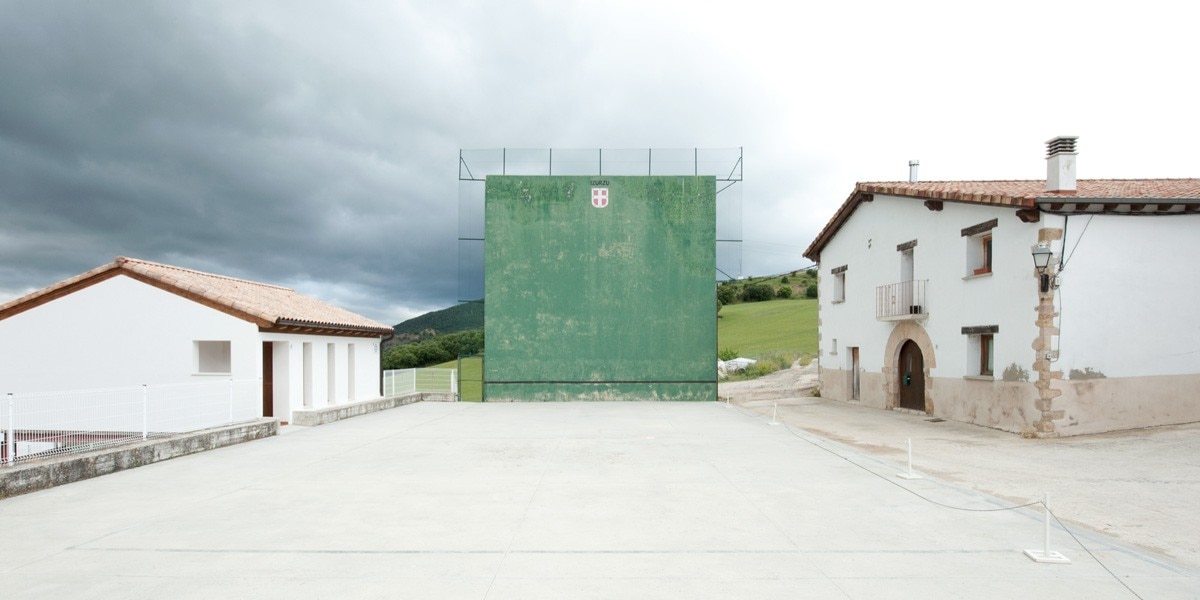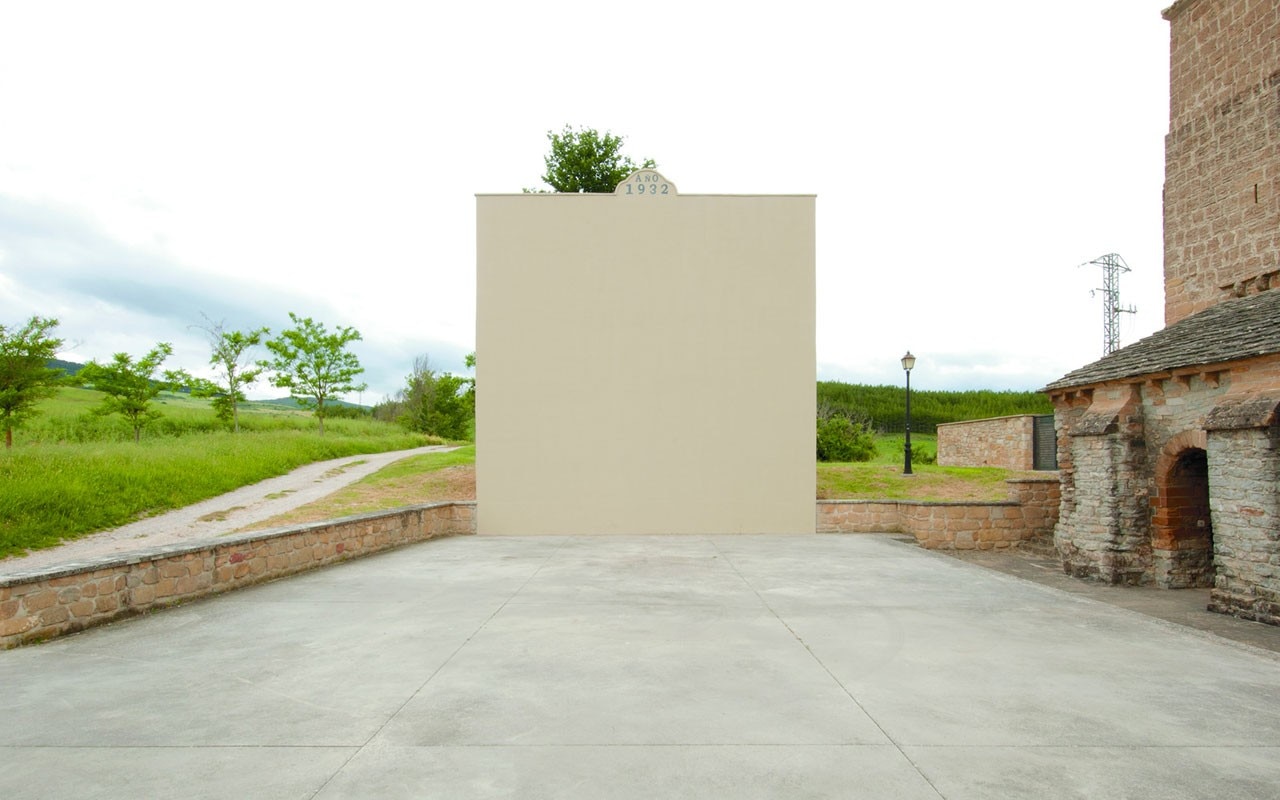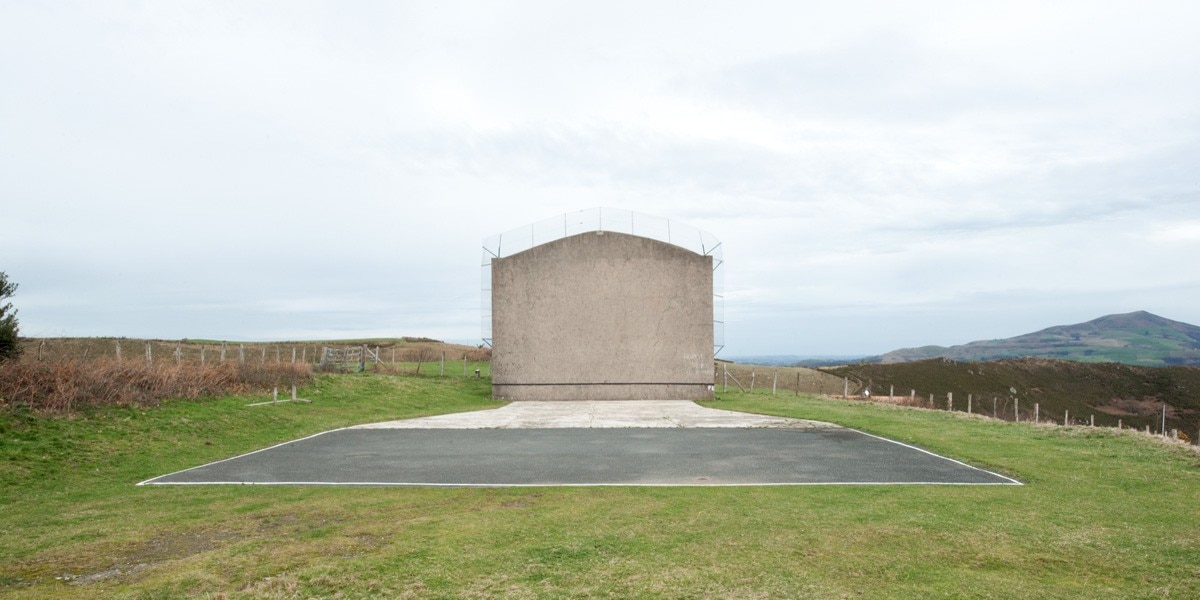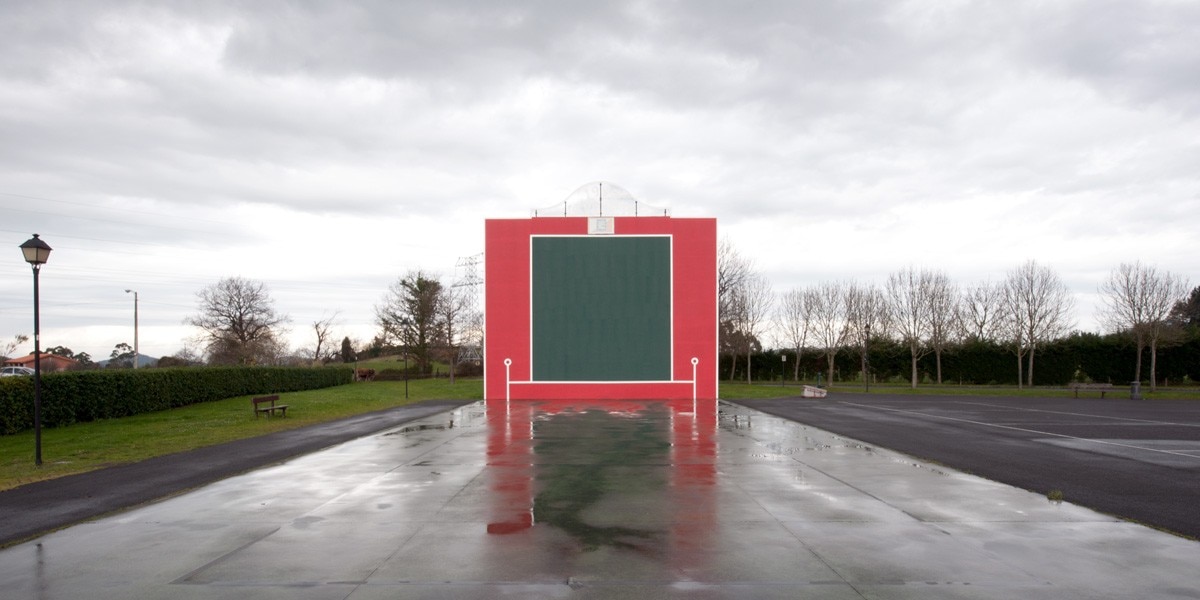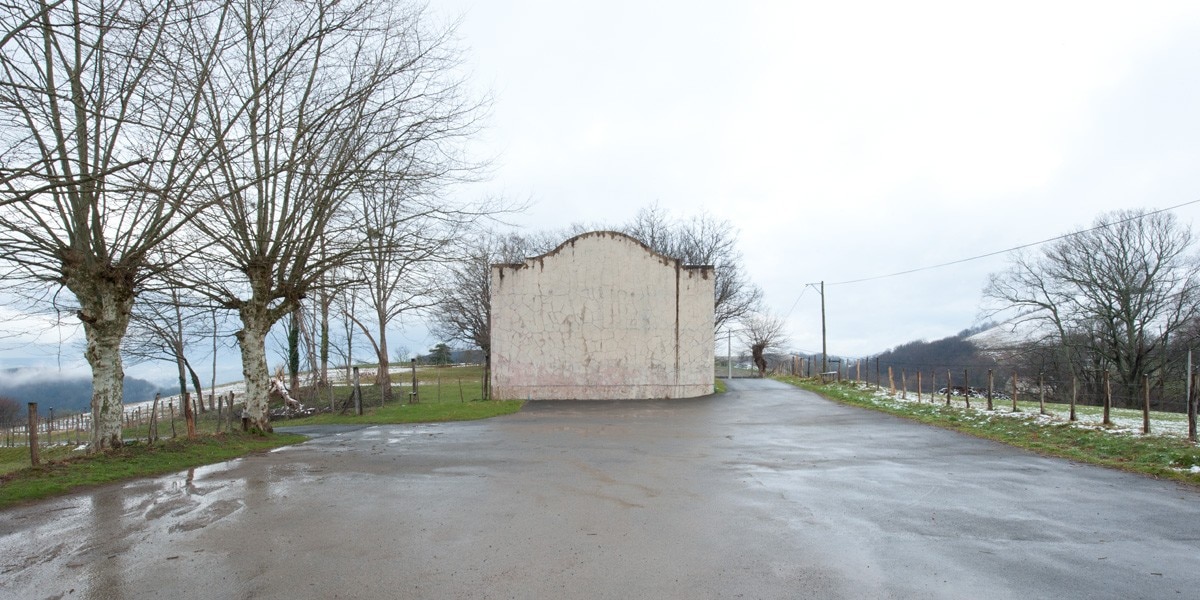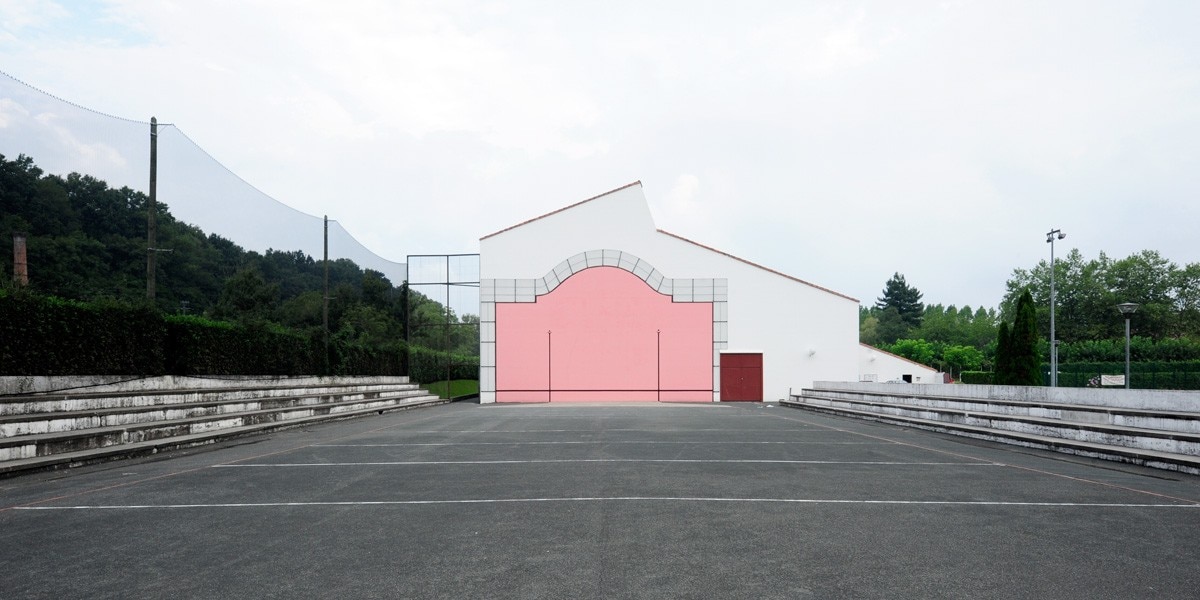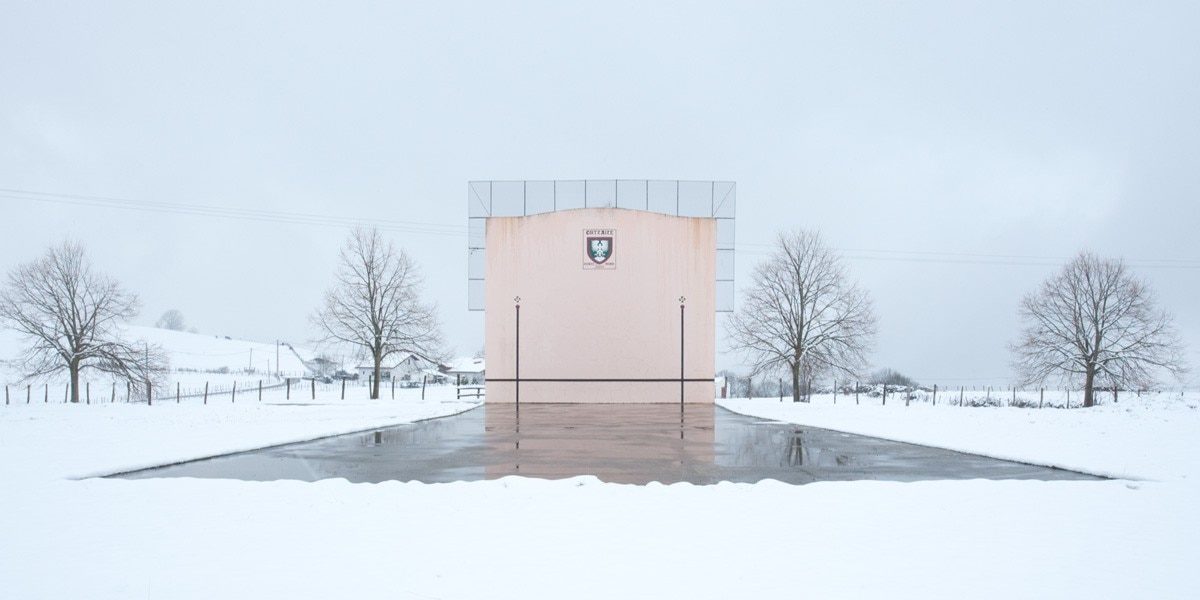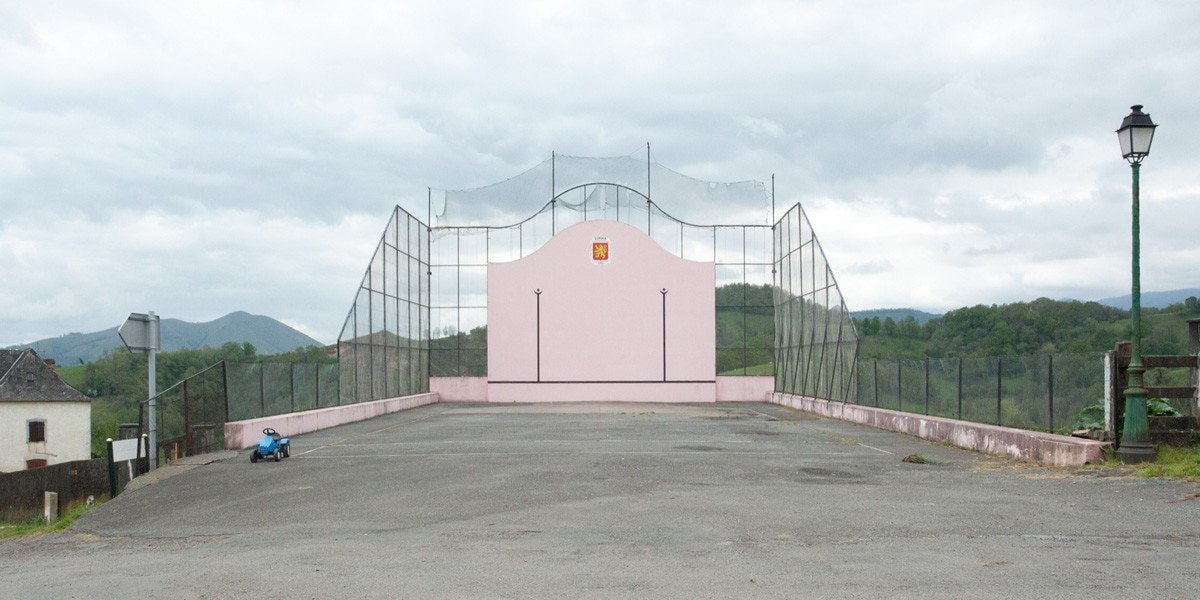
Frontons have always been placed in the most outstanding spots, both in villages and in their faraway neighbourhoods; they are usually located next to the churches, and, apart from being a place were different pelota can be played, it is also a communal space available for all neighbours, a kind of secular temple where countless social and cultural activities are carried out.
In order to accomplish this series of photographs, I have set off from the study of different typologies of frontons and have developed an aesthetic research, basing my investigation on the relation between architecture and landscape.
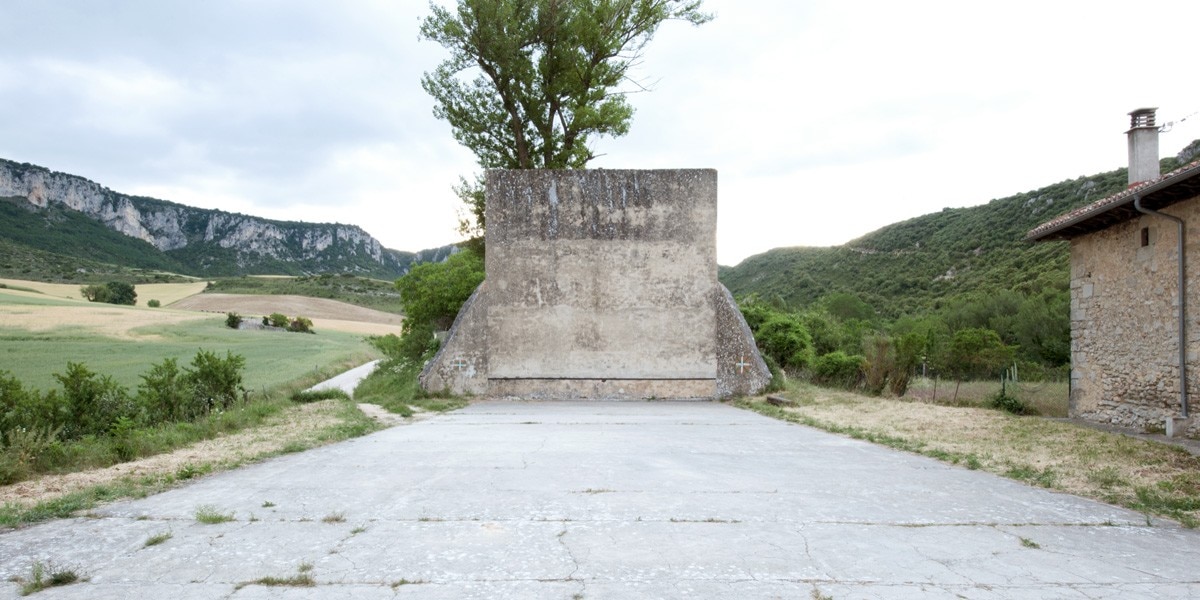
Finally I have chosen “one-wall frontons” because I’m fascinated by the fact that such architecturally basic work can get such an important social function and, at the same time, can generate such symbolic power. Much has been written about the sculptural character of the frontons: sculptor Jorge Oteiza’s presented the fronton as the Basque “emptiness” paradigm.
However, with this series of photographs, I intend to highlight the idea of the fronton as an opening window to landscape and this could as well be considered as window looking to a country’s collective memory.
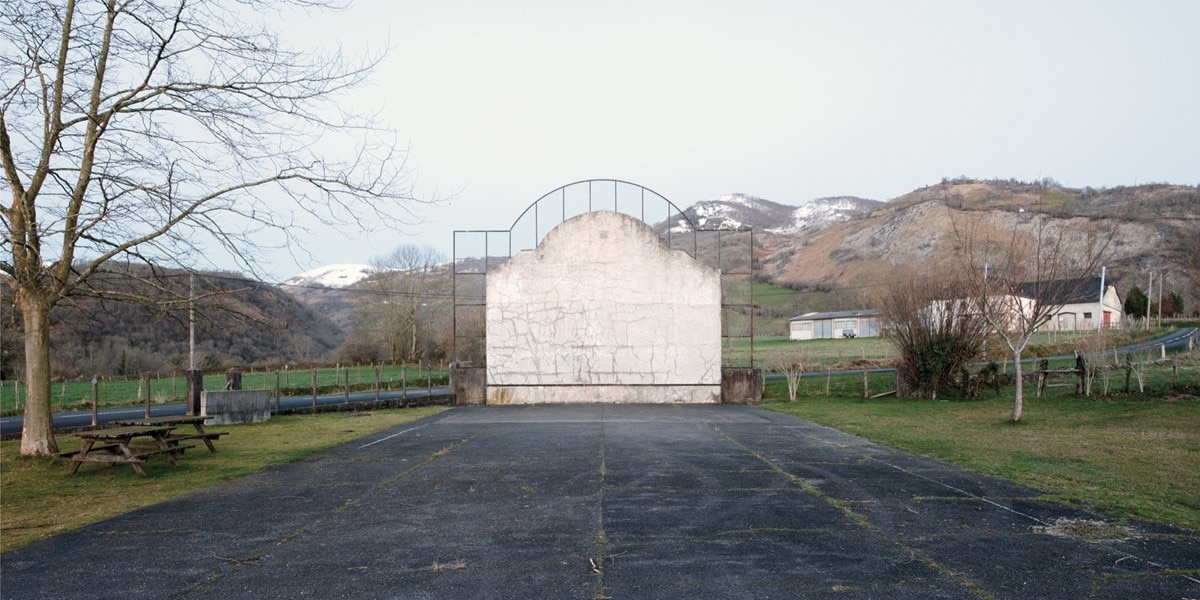
When I was about to finish the series of photographs, I knew that the architect Peña Gantxegi, already deceased, had worked on the same concepts and that he had portrayed his ideas masterfully in the cemetery in Oiartzun. His work is a wall with the shape of a fronton (or tombstone) on the wall of the graveyard, but with a big rectangular hole in its middle, from which the outer landscape can be made out. A window between the world of the deads and the world of the alives. Asier Gogortza
